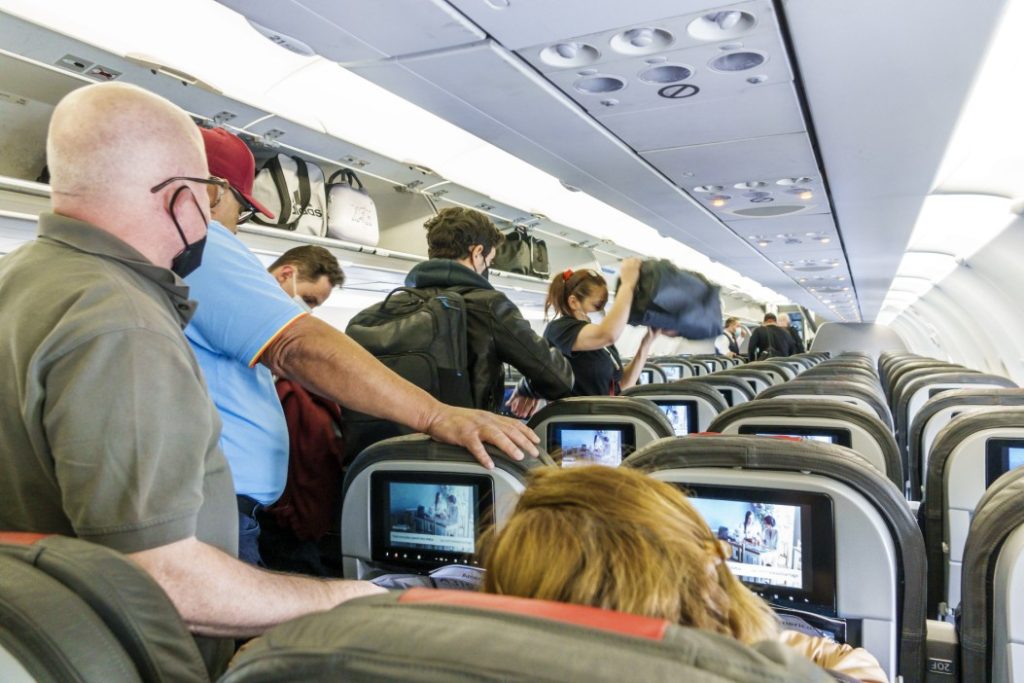The phenomenon of disruptive airline passengers has evolved, moving from the boarding gate to the aircraft aisle. While “gate lice,” referring to passengers who prematurely crowd the gate area, have long been a nuisance, a new breed of bothersome travelers, dubbed “aisle lice,” is emerging, causing frustration and delays during the deplaning process. This new category of disruptive passenger describes those who aggressively push their way through the aisle after landing, disregarding common courtesy and impeding the orderly flow of passengers exiting the aircraft.
A recent online discussion on Reddit sparked a heated debate on this topic, highlighting the growing annoyance caused by “aisle lice.” One user recounted an experience where, upon landing, the window seat passenger in their row abruptly pushed past them and their fellow aisle seat companion to be the first off the plane, despite being furthest from the exit. This incident ignited a flurry of comments from other travelers who shared similar experiences and expressed their frustration with this inconsiderate behavior, particularly when it originates from passengers seated in first class, where a higher level of decorum might be expected.
The discussion thread revealed a consensus among many that “aisle lice” are a considerably greater problem than “gate lice.” While some tolerance for “gate lice” is possible, as their eagerness often stems from a desire to secure overhead bin space, “aisle lice” directly impact the deplaning process, causing delays and unnecessary headaches for other passengers. The confined space of the aisle makes it impossible to avoid these pushy individuals, amplifying the frustration. Furthermore, unlike the rush to board, where everyone eventually gets on the plane, the disorderly scramble to exit actively hinders the smooth and efficient disembarkation for everyone.
The complaints about “aisle lice” extend beyond mere inconvenience. The aggressive and inconsiderate behavior of these passengers can create a tense and uncomfortable atmosphere. The jostling and pushing can lead to accidental bumps and physical contact, increasing the risk of minor injuries or spills. Furthermore, the lack of consideration displayed by “aisle lice” contributes to a sense of disrespect and disregard for fellow passengers, creating a negative travel experience.
The rise of “aisle lice” can be attributed to several factors. The increasing density of air travel, combined with shrinking seat sizes and limited personal space, likely contributes to heightened anxieties and impatience among passengers. Additionally, the pressure to make connecting flights or quickly reach their final destination may cause some travelers to prioritize their own speed over common courtesy. Regardless of the underlying reasons, the behavior is widely perceived as rude and disruptive.
Moving forward, airlines could consider implementing strategies to mitigate the issue of “aisle lice.” Clearer announcements and reminders about proper deplaning etiquette could help raise awareness and encourage more considerate behavior. Flight attendants could also play a more active role in managing the flow of passengers exiting the aircraft, ensuring that those with tight connections are given priority while discouraging the aggressive pushing and shoving often exhibited by “aisle lice.” Ultimately, a collective effort by airlines and passengers to promote respectful and considerate behavior is crucial to creating a more pleasant and efficient travel experience for everyone. The increasing awareness and discussion surrounding “aisle lice” highlight the need for a shift in passenger behavior towards greater consideration and courtesy during the deplaning process.


